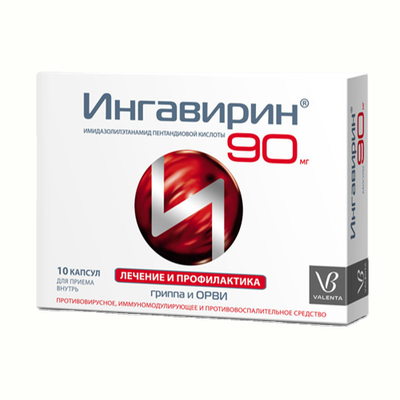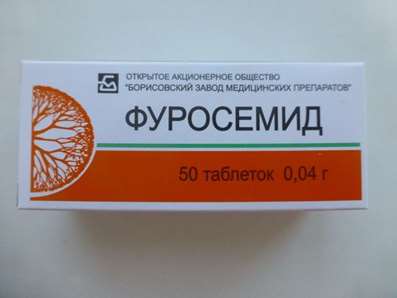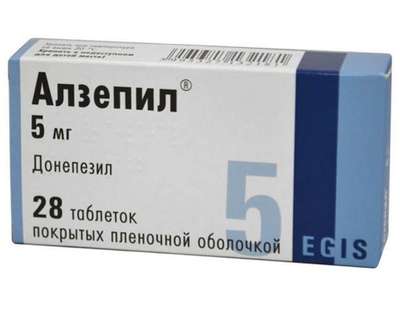Instruction for use: Amitriptyline 25 mg
I want this, give me price
International Nonproprietary Name (INN): Amitriptyline
Pharmaceutic group: Antidepressants
Presentation: Tablets 10 mg ¹50 or 25 mg ¹50.
Available with prescription
Indications for Amitriptyline
Amitriptyline is a tricyclic antidepressant (TCA). It is the most widely used TCA and has at least equal efficacy against depression as the newer class of SSRIs according to a study from early 2001. As well as reducing depressive symptoms, these types of tricyclics also ease migraines, tension headaches, anxiety attacks and some schizophrenic symptoms.
Amitriptyline acts primarily as a serotonin-norepinephrine reuptake inhibitor, with strong actions on the serotonin transporter and moderate effects on the norepinephrine transporter. It has negligible influence on the dopamine transporter and therefore does not affect dopamine reuptake, being nearly 1,000 times weaker on it than on serotonin.
Amitriptyline additionally functions as a 5-HT2A, 5-HT2C, 5-HT6, 5-HT7, α1-adrenergic, H1, H2, H4, and mACh receptor antagonist, and σ1 receptor agonist. It has also been shown to be a relatively weak NMDA receptor negative allosteric modulator at the same binding site as phencyclidine. Amitriptyline inhibits sodium channels, L-type calcium channels, and Kv1.1, Kv7.2, and Kv7.3 voltage-gated potassium channels, and therefore acts as a sodium, calcium, and potassium channel blocker as well.
Recently, amitriptyline has been demonstrated to act as an agonist of the TrkA and TrkB receptors. It promotes the heterodimerization of these proteins in the absence of NGF and has potent neurotrophic activity both in-vivo and in-vitro in mouse models. These are the same receptors BDNF activate, an endogenous neurotrophin with powerful antidepressant effects, and as such this property may contribute significantly to its therapeutic efficacy against depression. Amitriptyline does also act as FIASMA (functional inhibitor of acid sphingomyelinase).
Amitriptyline is used for a number of medical conditions including: depressive disorders, anxiety disorders, attention deficit hyperactivity disorder, migraine prophylaxis, eating disorders, bipolar disorder, post-herpetic neuralgia, and insomnia.
Amitriptyline is used in ankylosing spondylitis for pain relief. It is also used as a preventive for patients with recurring biliary dyskinesia (sphincter of Oddi dysfunction).
Amitriptyline is also used in the treatment of nocturnal enuresis in children.
Amitriptyline may be prescribed for other conditions such as, post-traumatic stress disorder (PTSD), chronic pain, carpal tunnel syndrome (CTS), fibromyalgia, vulvodynia, interstitial cystitis, male chronic pelvic pain syndrome, irritable bowel syndrome (IBS), diabetic peripheral neuropathy, neurological pain, laryngeal sensory neuropathy, chronic fatigue syndrome and painful paresthesias related to multiple sclerosis. Typically lower dosages are required for pain modification of 10 to 50 mg daily.
USUAL ADULT DOSE FOR DEPRESSION.
Oral:
Initial dose: 25 to 100 mg per day in 3 to 4 divided doses or 50 to 100 mg at bedtime.
Maintenance dose: 25 to 150 mg per day in single or 3 to 4 divided doses. 25 mg per day at bedtime has been used for premenstrual depression. Dose increases should be made gradually. A small number of hospitalized patients may need as much as 300 mg per day.
Patients with major depressive disorder (MDD), both adult and pediatric, may experience worsening of their depression and/or the emergence of suicidal ideation and behavior (suicidality) or unusual changes in behavior, whether or not they are taking antidepressant medications, and this risk may persist until significant remission occurs. Suicide is a known risk of depression and certain other psychiatric disorders, and these disorders themselves are the strongest predictors of suicide. There has been a long-standing concern, however, that antidepressants may have a role in inducing worsening of depression and the emergence of suicidality in certain patients during the early phases of treatment. Pooled analyses of short-term placebo-controlled trials of antidepressant drugs (SSRIs and others) showed that these drugs increase the risk of suicidal thinking and behavior (suicidality) in children, adolescents, and young adults (ages 18-24) with major depressive disorder (MDD) and other psychiatric disorders. Short -term studies did not show an increase in the risk of suicidality with antidepressants compared to placebo in adults beyond age 24; there was a reduction with antidepressants compared to placebo in adults aged 65 and older.
Trade name of the drug – Amitriptyline
Dosage Form: tablets
Chemical rational name: 3- (10,11-dihydro-5H-dibenz [a, d] cyclohepten-5-ylidene) -N, N-dimethylpropan-1-amine hydrochloride
Active substance:
amitriptyline hydrochloride - 11.32 mg and 28.30 mg, or 10 mg and 25 mg of amitriptyline;
Excipients: microcrystalline cellulose - 40/100 mg, lactose monohydrate (milk sugar) - 40/100 mg, pregelatinised starch - 25.88 / 64.70 mg colloidal silicon dioxide (Aerosil) - 0.4 / 1 mg, talc - 1.2 / 3 mg magnesium stearate - 1.2 / 3 mg.
Description:
Tablets from white to white with a yellowish shade, allowed light marbling.
For the 10 mg dosage - flat-cylindrical, with a facet.
For the 25 mg dosage - flat-cylindrical, with a facet.
Pharmacotherapeutic group:Antidepressants
ATX code: N06AA09
Pharmacological Properties of AmitriptylinePharmacodynamics
Antidepressants (tricyclic antidepressant). Has also some analgesic (central origin) antiserotoninovoe action helps to eliminate bedwetting and reduces appetite.
It has a strong peripheral and central anticholinergic effect due to a high affinity to the nicotinic acetylcholine receptor m; strong sedative effect connected with affinity of H1-histamine receptors, and alpha-adrenoceptor blocking action. It has the properties of anti-arrhythmic drug (PM) the IA class, like quinidine in therapeutic doses slows ventricular conduction (in overdose can cause severe intraventricular block).
The mechanism of antidepressant action is associated with increasing concentrations of norepinephrine and / or serotonin in the central nervous system (CNS) (reducing their reabsorption). The accumulation of these neurotransmitters occurs as a result of inhibition of the reverse capture presynaptic neuronal membrane. With prolonged use reduces the functional activity of beta-adrenergic and serotonin receptors of the brain, normalizes adrenergic and serotonergic transmission, restores the balance of these systems, impaired in depressive states. When anxiety and depressive states reduces anxiety, agitation and depressive symptoms.
The mechanism of action of anti-ulcer due to the ability to provide sedation and m-anticholinergic action.
Efficacy in bedwetting due, apparently, anticholinergic activity, resulting in an increased ability of the bladder to stretch direct beta-adrenergic stimulation, the activity of alpha-adrenergic agonists, accompanied by increased sphincter tone, and central serotonin reuptake blockade.
It has a central analgesic action, which is believed to be associated with changes in the concentration of monoamines in the central nervous system, especially serotonin, and effects on endogenous opioid system.
The mechanism of action for bulimia nervosa is unclear (perhaps similar to that in depression). It shows a clear effect of the drug in patients with bulimia as a non-depressed, and if available, with the reduction of bulimia can be observed without a concomitant weakening of the most depressed.
When general anesthesia reduces blood pressure (BP) and body temperature. It does not inhibit monoamine oxidase (MAO).
The antidepressant effect develops within 2-3 weeks after the start of the application.
Pharmacokinetics
Absorption - high. Bioavailability 30-60% amitriptyline, nortriptyline its active metabolite - 46-70%. The time to maximum concentration (Tmax) after ingestion 2,0-7,7 hours. The volume of distribution of 5.10 l / kg. Effective therapeutic blood concentration for amitriptyline - 50-250 ng / ml, nortriptyline 50-150 ng / ml. The maximum plasma concentration (Cmax) 0,04-0,16 g / ml. Passes (including nortriptyline) histohematogenous barriers, including the blood-brain barrier, placental barrier, enters the breast milk. Relationship to plasma proteins - 96%.
It is metabolized in the liver with isozymes CYP2C19, CYP2D6, has the effect of "first pass" (by demethylation, hydroxylation) to form active metabolites - nortriptyline, 10-hydroxy-amitriptyline, and active metabolites. The half-life of plasma (T1 / 2) - 10-26 hours for 18-44 hours amitriptyline and nortriptyline. Excreted by the kidneys (mainly as metabolites) - 80% for 2 weeks, partly with bile.
Indications for Amitriptyline
Depression (especially anxiety, agitation and sleep disorders, including childhood, endogenous, involutional, reactive, neurotic, drug, with organic brain lesions).
In the combined therapy is used with mixed emotional disorders, psychoses, schizophrenia, alcohol withdrawal, disorders of behavior (activity and attention), nocturnal enuresis (except in patients with hypotension bladder), bulimia nervosa, chronic pain syndrome (chronic pain in cancer patients, migraine, rheumatic diseases, atypical facial pain, postherpetic neuralgia, post-traumatic neuropathy, diabetic or other. peripheral neuropathy), headache, migraine (prevention), gastric ulcer and 12 duodenal ulcer.
Contraindications for Amitriptyline
Hypersensitivity, use together with MAO inhibitors and 2 weeks before starting treatment, myocardial infarction (acute and subacute periods), acute alcohol intoxication, acute intoxication with hypnotics, analgesic and psychoactive drugs, angle-closure glaucoma, severe violations of AV and intraventricular conduction (blockade beam legs branch block, AV block II st.), lactation, children under 6 years.
Due to the content of the tablets of lactose monohydrate (milk sugar), the drug should not be taken by patients with rare hereditary disorders such as galactose intolerance, lactase deficiency or glucose-galactose malabsorption.
Precautions: Amitriptyline should be used with caution in patients with alcoholism, bronchial asthma, schizophrenia (possible activation of psychosis), bipolar disorder, epilepsy, the oppression of bone marrow hematopoiesis, diseases of the cardiovascular system (CVS) (angina, arrhythmias, heart block, chronic heart failure, myocardial infarction, hypertension), ocular hypertension, stroke, decreased motor function of the gastrointestinal tract (GIT) (risk of paralytic ileus), liver and / or kidney failure, hyperthyroidism, prostatic hyperplasia, urinary retention, hypotension bladder, pregnancy (especially I trimester), in old age.
Amitriptyline Dosage and Administration
inside, without chewing, immediately after a meal (to reduce irritation of the gastric mucosa).
Adults
Adults with depression initial dose - 25-50 mg at night, then gradually the dose may be increased based on efficacy and tolerability up to a maximum
300 mg / day in 3 divided doses (the largest part of the dose is taken at night). When the therapeutic effect of the dose can be gradually reduced to the minimum effective depending on the condition of the patient. The duration of treatment is determined by the condition of the patient, efficacy and tolerability of the therapy, and can range from a few months to 1 year, and if necessary more.
In old age with lung disorders, as well as bulimia nervosa, in the complex therapy of mixed emotional disorders and behavioral disorders, psychosis, schizophrenia, and alcohol withdrawal is prescribed in doses of 25-100 mg / day (at night), after reaching the therapeutic effect of pass at the minimum effective dose - 10-50 mg / day.
For the prevention of migraine, chronic pain syndrome of neurogenic nature (including long-term headaches), as well as in the treatment of gastric ulcer and 12 duodenal ulcer - from 10-12,5-25 to 100 mg / day (maximum of the dose is taken at night).
Children
Babies as an antidepressant: from 6 to 12 years - 10-30 mg / day or 05/01 mg / kg / day fractionally, as a teenager - to 100 mg / day.
If nocturnal enuresis in children 6-10 years - 10-20 mg / day for the night of 11-16 years - up to 50 mg / day.
Side effect ofAmitriptyline
Related anticholinergic effect of the drug: blurred vision, paralysis of accommodation, mydriasis, increased intraocular pressure (only in persons with local anatomical predisposition - narrow angle of anterior chamber), tachycardia, dry mouth, confusion (delirium or hallucinations), constipation, paralytic intestinal obstruction, difficulty urinating.
CNS: drowsiness, fainting, fatigue, irritability, anxiety, disorientation, hallucinations (particularly in elderly patients and in patients with Parkinson's disease), anxiety, agitation psychomotor, mania, hypomania, impaired memory, reduced ability to concentrate, insomnia, "nightmarish" dream, asthenia; headache; dysarthria, tremor of small muscles, especially arms, hands, head and tongue, peripheral neuropathy (paresthesia), myasthenia gravis, myoclonus; ataxia, extrapyramidal syndrome, acceleration and intensification of seizures; changes in the electroencephalogram (EEG).
From the CCC: tachycardia, palpitations, dizziness, orthostatic hypotension, non-specific changes in the electrocardiogram (ECG) (range S-T or T-wave) in patients without heart disease; arrhythmia, labile blood pressure (decrease or increase in blood pressure), violation of intraventricular conduction (extension of the QRS complex, changing the interval P-Q, bundle branch block blockade).
On the part of the digestive tract: nausea, heartburn, gastralgia, hepatitis (including altered liver function and cholestatic jaundice), vomiting, increased appetite and weight gain or loss of appetite and weight loss, stomatitis, taste change, diarrhea, darkening of the tongue.
From endocrine system: an increase in size (swelling) of the testicles, gynecomastia; an increase in the size of the breast, galactorrhea; decreased or increased libido, reduced potency, hypo- or hyperglycemia, hyponatremia (decreased production of vasopressin), antidiuretic hormone syndrome of inappropriate secretion (ADH).
Allergic reactions: skin rash, pruritus, photosensitivity, angioedema, urticaria.
Other: hair loss, tinnitus, edema, hyperpyrexia, swollen lymph nodes, urinary retention, pollakiuria.
With prolonged treatment, especially in high doses, when it stopped suddenly may develop withdrawal symptoms: nausea, vomiting, diarrhea, headache, malaise, sleep disturbances, unusual dreams, unusual excitement; while phasing out after long-term treatment - irritability, restlessness, insomnia, abnormal dreams.
Communication with the reception of the drug has not been established: lupus-like syndrome (migratory arthritis, the appearance of antinuclear antibodies and rheumatoid factor positive), abnormal liver function, ageusia.
overdose
Symptoms. CNS: drowsiness, stupor, coma, ataxia, hallucinations, anxiety, agitation, decreased ability to concentrate, disorientation, confusion, dysarthria, hyperreflexia, muscle rigidity, choreoathetosis, epileptic syndrome.
From the CCC: lowering blood pressure, tachycardia, arrhythmia, violation of intracardiac conduction, characteristic of tricyclic antidepressants poisoning ECG changes (particularly QRS), shock, heart failure; in very rare cases - cardiac arrest.
Others: respiratory depression, dyspnea, cyanosis, vomiting, hyperthermia, mydriasis, increased sweating, oliguria or anuria.
Symptoms develop within 4 hours after the overdose, peak within 24 hours and lasts 4-6 days. If you suspect an overdose, especially in children, the patient should be hospitalized.
Treatment: orally: gastric lavage, activated charcoal; symptomatic and supportive therapy; in severe anticholinergic effects (lowering of blood pressure, arrhythmias, coma, myoclonic seizures) - the introduction of a cholinesterase inhibitor (physostigmine use is not recommended due to an increased risk of seizures); maintenance of blood pressure and fluid and electrolyte balance. Showing CCC control functions (including ECG) for 5 days (a relapse can occur after 48 hours and later), anticonvulsant therapy, artificial lung ventilation (ALV), and others. Resuscitation. Hemodialysis and forced diuresis are not effective.
Interaction
In a joint application of ethanol and drugs which depress the central nervous system (including the others. Antidepressants, barbiturates, benzadiazepinov and general anesthetics) may significantly increased inhibitory action on CNS, respiratory depression and hypotensive effect.
Increases sensitivity to drinks containing ethanol.
Increases anticholinergic effect of drugs with anticholinergic activity (eg, phenothiazine derivatives, antiparkinsonian drugs, amantadine, atropine, biperiden, antihistamine drugs), which increases the risk of side effects (CNS, vision, bowel and bladder). In a joint application with holinoblokatorami, phenothiazine derivatives and benzodiazepines - mutual enhancement of the sedative and central anticholinergic effects and increased risk of seizures (lowering the threshold for seizure activity); phenothiazine derivatives, may further increase the risk of neuroleptic malignant syndrome.
In a joint application with antiepileptic drugs may increase depressant effects on the central nervous system, lowering the threshold for seizure activity (when used in high doses) and a decrease in the efficiency of the latter.
In a joint application with antihistamine drugs, clonidine - increased inhibitory action on the central nervous system; with atropine - increases the risk of paralytic ileus; with drugs that cause extrapyramidal reactions - increased severity and frequency of extrapyramidal effects.
With simultaneous use of amitriptyline and indirect anticoagulants (coumarin derivatives or indadiona) may increase the anticoagulant activity of the latter.
Amitriptyline may enhance the depression caused by glucocorticosteroids (GCS).
Drugs for the treatment of hyperthyroidism increases the risk of agranulocytosis.
Reduces the effectiveness of phenytoin and alpha-blockers.
Inhibitors of microsomal oxidation (cimetidine), extend T1 / 2, increase the risk of toxic effects of amitriptyline (may require dose reduction of 20-30%), inducers of microsomal liver enzymes (barbiturates, carbamazepine, phenytoin, nicotine and oral contraceptives) reduce the concentration in the plasma and reduce the effectiveness of amitriptyline.
The combined use of disulfiram and others. Atsetaldegidrogenazy inhibitors provokes delirium.
Fluoxetine and fluvoxamine increase in plasma concentration of amitriptyline (may require amitriptyline dose reduction by 50%).
Estrogensoderjath oral contraceptive drugs and estrogens may increase the bioavailability of amitriptyline.
In an application amitriptiliina with clonidine, guanethidine, betanidinom, reserpine and methyldopa - decrease the hypotensive effect of the latter; with cocaine - the risk of cardiac arrhythmias.
Antiarrhythmic drugs (such as quinidine) increase the risk of arrhythmias (possibly slowing metabolism of amitriptyline).
Pimozide probucol and can enhance cardiac arrhythmia, which is manifested in the extension of Q-T interval on the ECG.
It enhances the effect of the SCA epinephrine, norepinephrine, isoprenaline, ephedrine and phenylephrine (including when these drugs are part of the local anesthetics), and increases the risk of cardiac arrhythmias, tachycardia, severe hypertension.
When coadministered with alpha-adrenergic agonists for intranasal administration, or for use in ophthalmology (with significant systemic absorption) can be amplified vasoconstrictor action of the latter.
In a joint reception with thyroid hormones - the mutual reinforcement of therapeutic effects and toxic effect (include heart arrhythmia and a stimulating effect on the central nervous system).
M-holinoblokatory and antipsychotic drugs (neuroleptics) increase the risk of hyperpyrexia (especially in hot weather).
At a joint appointment with the others. Gematotoksichnosti drugs may increase gematotoksichnosti.
Incompatible with MAO inhibitors (possible increase in the frequency of periods hyperpyrexia, severe convulsions, hypertensive crises, and death of the patient).
special instructions for Amitriptyline
Before treatment is necessary to monitor blood pressure (in patients with low or labile blood pressure, it may be reduced even more); during treatment - control peripheral blood (in some cases may develop agranulocytosis, and therefore it is recommended to monitor blood picture, especially with an increase in body temperature, the development of influenza-like symptoms and a sore throat), long-term therapy - control functions SSA and the liver. In the elderly and patients with CVD is shown control of heart rate (HR), blood pressure, ECG. The ECG may appear clinically insignificant changes (smoothing of the T wave, depression S-T segment, the expansion of the QRS complex).
Care should be taken with a sharp transition to the upright position of "lying" or "sitting".
The treatment should be to exclude the use of ethanol.
Assign no earlier than 14 days after discontinuation of MAO inhibitors, starting with low doses.
With the sudden discontinuation after long-term treatment may develop the syndrome of "cancellation".
Amitriptyline at a dose higher than 150 mg / day decreases the threshold for seizure activity (note the risk of epileptic attacks in susceptible patients, and also in the presence of others. Predisposing to seizures of factors, such as brain damage of any etiology, the simultaneous use of antipsychotic drugs (neuroleptics) , during the non-ethanol or cancel drugs with anticonvulsant properties, such as benzodiazepines).
Major depression is peculiar risk of suicidal actions, which may persist until significant remission. In this regard, at the beginning of the treatment with a combination of drugs from the group of benzodiazepines or neuroleptic drugs and the constant medical supervision (charging proxies storage and issuing of drugs) may be indicated.
In children, adolescents and young adults (under 24 years) with depression and others. Mental disorders antidepressants compared to placebo, increased the risk of suicidal thoughts or suicidal behavior. Therefore, the appointment of amitriptyline or any other. Antidepressants in these patients should be related to the risk of suicide and the benefits from their use. In short-term studies in people older than 24 years, the risk of suicide did not increase, and in people over 65 years is somewhat reduced. During antidepressant treatment all patients should be monitored for early detection of suicidal tendencies.
In patients with cyclic affective disorders during the depressive phase of manic or hypomanic state may develop during therapy (requires dose reduction or withdrawal of the drug and the appointment of antipsychotic drugs). After the relief of these conditions, if there is evidence of low doses in the treatment can be resumed.
Due to the potential cardiotoxic effects need to be careful in the treatment of patients with hyperthyroidism or patients receiving thyroid hormone drugs.
In conjunction with electroconvulsive therapy is prescribed only with careful medical supervision.
In predisposed patients and elderly patients may provoke the development of drug psychoses, especially at night (after discontinuation of the drug tested within a few days).
It may cause paralytic ileus, especially in patients with chronic constipation, the elderly or patients who are forced to comply with bed rest.
Before the general or local anesthesia, the anesthesiologist should be warned that the patient is taking amitriptyline.
Because of the anticholinergic action of lacrimation may decrease and increase the relative amount of mucus in the tear fluid which may cause damage to the corneal epithelium in patients who use contact lenses.
With prolonged use, an increase in the incidence of dental caries. It may be increased need for riboflavin.
The study of reproduction in animals showed adverse effects on the fetus, and adequate and well-controlled studies in pregnant women have not performed. Pregnant women should use the drug only if the expected benefit to the mother outweighs the potential risk to the fetus.
It penetrates into breast milk and may cause drowsiness in infants.
In order to avoid the syndrome of "cancellation" in neonates (manifested by shortness of breath, drowsiness, intestinal colic, increased nervous irritability, increased or decreased blood pressure, tremor or spastic phenomena) receiving amitriptyline gradually canceled at least 7 weeks before the expected birth.
Children are more sensitive to acute overdose, which should be considered dangerous and potentially fatal for them.
During the period of treatment must be careful when driving and other lesson. Potentially hazardous activities that require high concentration and psychomotor speed reactions.
Release form of Amitriptyline
Tablets of 10 mg or 25 mg.
10 tablets in blisters.
1, 2, 3, 4 or 5, the contour of cellular packages with instructions for use in a pile of cardboard.
100 tablets in a jar polymer.
500, 600, 1000, 1200 tablets in a jar polymer (for hospitals).
Each jar with instructions for use in a pile of cardboard.
Storage conditions of Amitriptyline
In the dark place at a temperature from 0 to 25 ° C. Keep out of the reach of children.
Shelf life of Amitriptyline
3 years.
Do not use beyond the expiration date printed on the package.
Conditions of supply of Amitriptyline from pharmacies
With prescription.

 Cart
Cart





